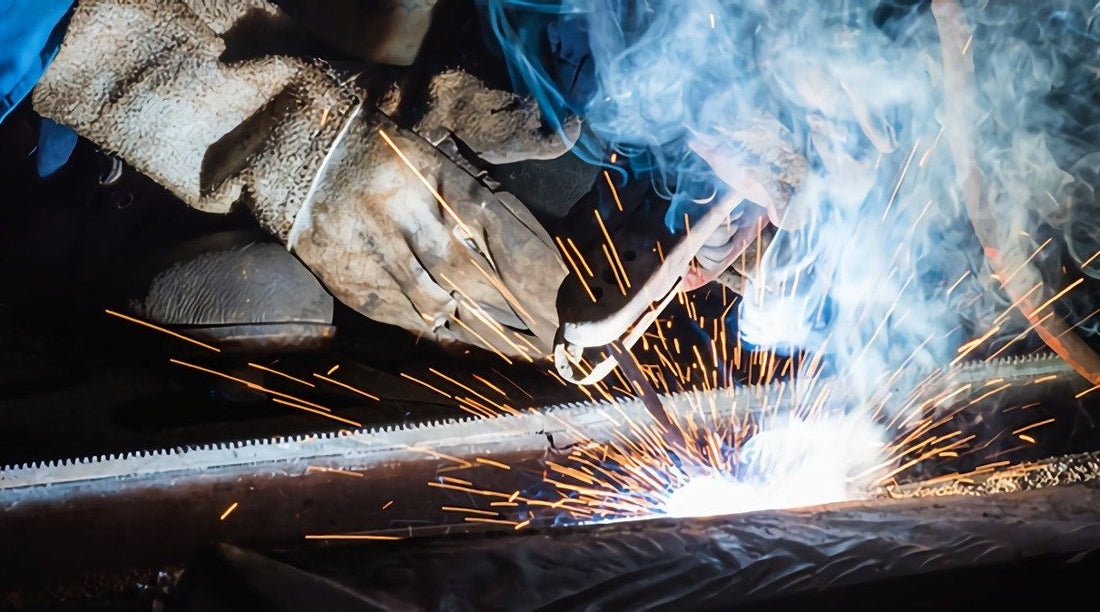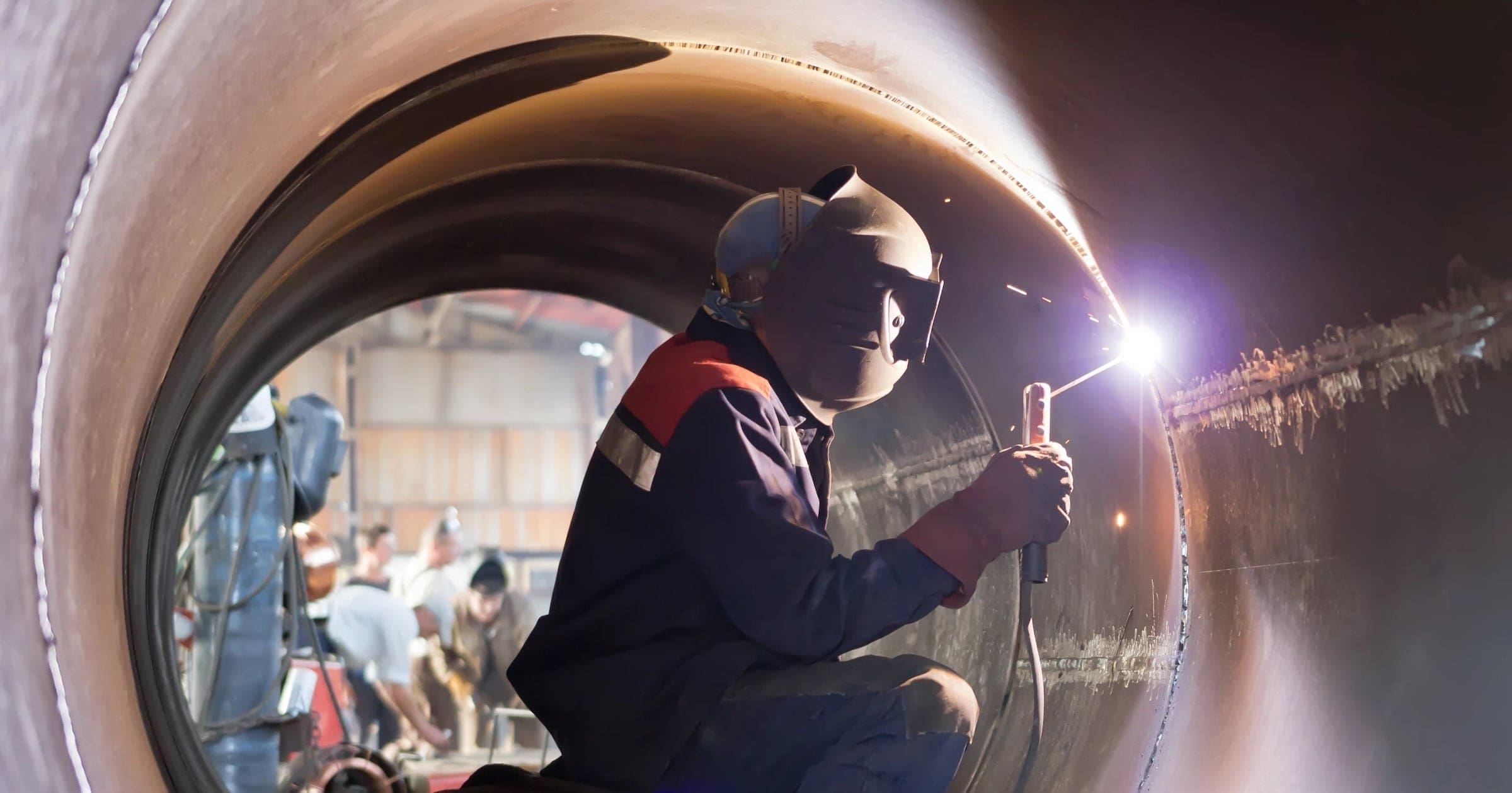Everything about Welding: Trick Insights Into Techniques and Best Practices for Success
Welding incorporates a selection of methods, each suited for certain materials and applications. Understanding these methods, such as GMAW, SMAW, and TIG, is crucial for achieving optimal outcomes. Moreover, the ideal devices and safety and security practices can not be forgotten. As preparation and troubleshooting play vital duties in the welding procedure, understanding these elements can substantially enhance the top quality of the end product. What are the crucial aspects that guarantee a successful weld?
Understanding Various Welding Techniques
Welding techniques incorporate a range of approaches, each fit to specific applications and products. Among the most common techniques are Gas Metal Arc Welding (GMAW), Secured Metal Arc Welding (SMAW), and Tungsten Inert Gas Welding (TIG) GMAW, additionally understood as MIG welding, is prominent for its rate and versatility, making it excellent for slim materials. SMAW, or stick welding, is favored for its simpleness and effectiveness in outdoor atmospheres, specifically with thicker metals. TIG welding uses accuracy and control, making it appropriate for elaborate job and non-ferrous steels (Montana Mobile Welding and Repair Belgrade). Each method has its unique benefits and factors to consider, allowing welders to pick the best approach based upon the task's requirements, material kind, and preferred outcomes. Recognizing these methods is crucial for successful welding
Necessary Welding Devices and Devices
While various welding strategies require certain abilities, the right devices and tools are just as crucial for achieving top quality results. Vital welding tools consists of welding makers, which vary relying on the strategy-- such as MIG, TIG, or stick welding. Protective equipment, including safety helmets, aprons, and gloves, warranties safety and comfort throughout the process. Additionally, clamps and components aid secure products in position, making sure precision in welds. Consumables like welding rods, cable, and securing gas are likewise important components that affect the high quality of the weld. Furthermore, tools such as mills and cutters help with surface area preparation and post-weld finishing, contributing to an expert result. Buying premium devices eventually improves the effectiveness and performance of welding projects.
Safety And Security Practices in Welding
Correct security techniques are essential in the welding sector to protect workers from possible threats. Welders have to wear appropriate individual protective devices (PPE), consisting of headgears with proper shading, handwear covers, and flame-resistant clothes. Appropriate ventilation is vital to minimize direct exposure to unsafe fumes and gases produced throughout the welding process. Additionally, workers need to be learnt the appropriate handling of welding devices to avoid accidents. Fire precaution, such as keeping combustible materials far from the welding area and having fire extinguishers conveniently offered, are necessary. Routine inspections of tools and work spaces can aid identify possible threats prior to they result in accidents. By adhering to these safety and security practices, welders can create a much safer working environment and minimize dangers associated with their trade.
Readying Products for Welding
Preparing materials for welding is an essential action that significantly influences the high quality and honesty of the end product (Montana Mobile Welding and Repair Fabrication). Proper preparation involves cleaning the surfaces to get rid of contaminants such as dust, rust, and oil, which can endanger the weld. Strategies such as grinding, sanding, or utilizing solvents are generally employed to achieve a clean surface. Additionally, ensuring that the materials fit with each other comfortably is necessary; voids can lead to weak welds. It's also vital to think about the alignment and positioning of the components, as this will affect the convenience of welding and the last result. Lastly, choosing the suitable filler material and making certain compatibility with the base metals is crucial for achieving solid, durable welds
Tips for Achieving High-Quality Welds
Accomplishing premium welds calls for interest he said to detail and adherence to finest practices throughout the welding procedure. Proper joint preparation is vital, making sure surfaces are tidy and totally free from pollutants. Picking the suitable filler product and welding strategy based upon the base steels is essential for excellent bonding. Preserving regular traveling rate and angle while welding can advertise and protect against problems harmony. In addition, controlling warmth input is vital; excessive warm can cause bending and compromised joints. Routinely inspecting the welds throughout the procedure permits for instant modifications if essential. Finally, utilizing proper post-weld therapies, such as cleansing and stress alleviation, can boost the resilience and honesty of the weld, inevitably making sure a successful end result.
Fixing Usual Welding Issues
Welding typically presents difficulties that can affect the top quality and honesty of the end product. Typical issues such as porosity, irregular weld beads, and getting too hot can emerge, each calling for certain troubleshooting strategies. Understanding these troubles is important for welders to boost their skills and achieve perfect outcomes.
Porosity Issues Described
Porosity can typically be ignored, it stays a vital problem in welding that can endanger the integrity of a finished product. Porosity describes the presence of little gas pockets within the weld grain, which can damage the joint and lead to premature failing. This trouble generally occurs from pollutants, moisture, or improper securing gas insurance coverage during the welding procedure. To mitigate porosity, welders should confirm that the base products are completely dry and clean, utilize proper protecting gases, and maintain consistent welding parameters. Regularly evaluating the equipment and atmosphere can additionally aid determine possible concerns prior to they show up in the weld. Dealing with porosity successfully is essential for achieving strong, sturdy welds that satisfy high quality standards.

Inconsistent Weld Beans
Irregular weld grains can considerably impact the quality and toughness of a completed item. Numerous elements add to this issue, consisting of incorrect traveling speed, incorrect amperage setups, and inconsistent electrode angles. When the welder moves also swiftly, a grain might show up slim and do not have infiltration, while moving as well slowly can cause extreme build-up. In addition, utilizing the wrong amperage can lead to either damaging or extreme spatter, both of which concession weld stability. The welder's technique, such as inconsistent lantern activity, can likewise cause uneven grain read this look. To minimize these issues, welders ought to concentrate on keeping stable, controlled motions and guaranteeing correct equipment setups to achieve uniformity in their welds. Consistency is vital to achieving strong and trusted welds.
Overheating and Warping Issues
Extreme warmth during the welding process can cause substantial getting too hot and warping issues, influencing the structural integrity of the workpiece. These problems commonly show up as distortion, which can compromise placement and fit-up, making more setting up testing. Elements contributing to overheating include the selection of welding criteria, such as voltage and take a trip speed, in addition to the kind of product being welded. To alleviate these issues, welders need to maintain regular traveling speed and ideal heat input while checking the workpiece temperature. Additionally, preheating or post-weld warmth treatment can assist relieve tensions triggered by rapid cooling - Montana Mobile Welding and Repair Belgrade Fabrication. Routine examination and adherence to finest practices are essential in stopping getting too hot and making certain the longevity and integrity of bonded structures
Regularly Asked Inquiries
What Are the Occupation Opportunities in the Welding Market?
The welding market offers varied profession opportunities, including positions as welders, inspectors, teachers, and designers. Professionals can function in production, construction, aerospace, and automotive industries, taking advantage of solid need and affordable salaries in numerous duties.
Exactly How Can I Boost My Welding Rate Without Sacrificing Top Quality?
To enhance welding rate without sacrificing top quality, one must exercise reliable techniques, preserve devices, enhance setups, and improve hand-eye sychronisation. Routine training and seeking responses can likewise significantly add to achieving quicker, high-quality welds.
What Certifications Are Readily Available for Welders?
Numerous accreditations exist for welders, consisting of those from the American Welding Culture (AWS), the National Center for Building And Construction Education And Learning and Research Study (NCCER), and numerous industry-specific organizations. These credentials boost employability and show ability effectiveness.
Just How Does Welding Influence the Residences of Metals?
Welding affects the buildings of steels by altering their microstructure, which can lead to changes in ductility, toughness, and solidity. Heat input and air conditioning prices throughout the procedure substantially impact these material features.
Can I Weld Dissimilar Metals With Each Other?

Comments on “Stop welding failures with these tips from Montana Mobile Welding and Repair Belgrade Fabrication”